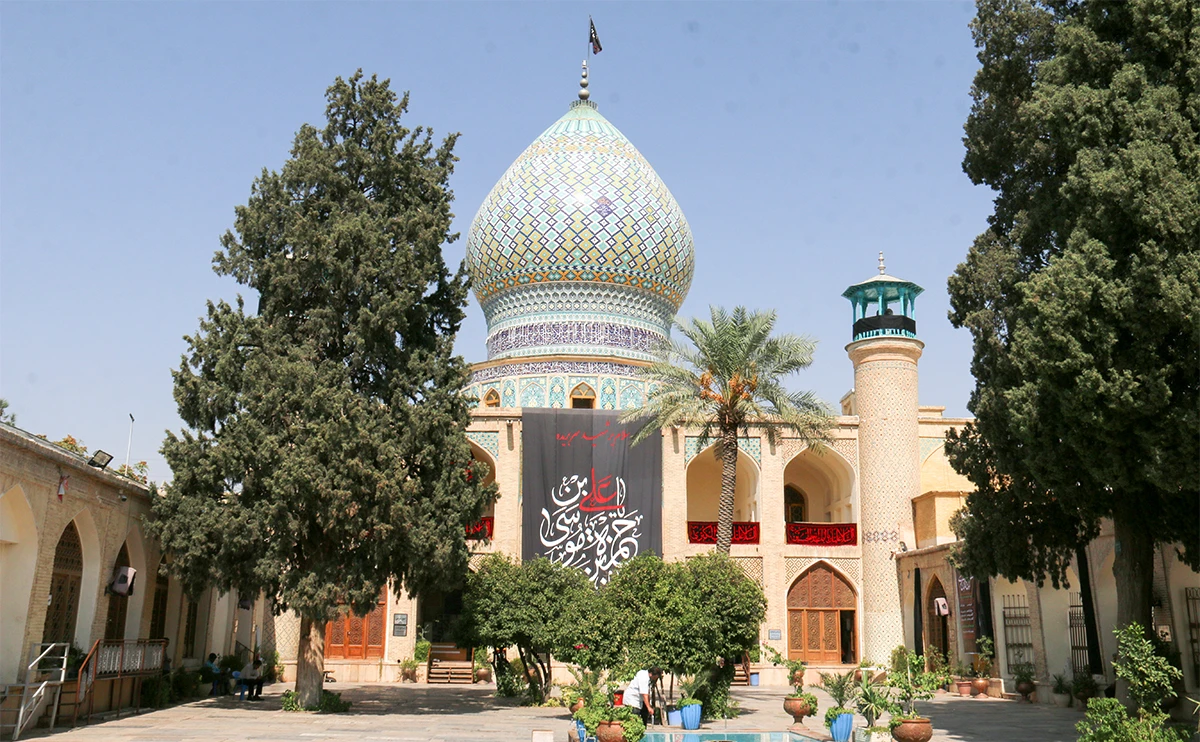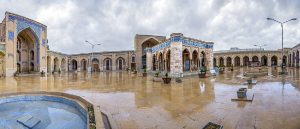Ali Ibn Hamzah Shrine is a historical shrine located in the city of Shiraz, Iran. It is a renowned tourist attraction and religious site, with a rich history and a variety of notable features. The shrine is considered an important cultural and religious landmark in Iran, and it continues to be a beloved site for visitors from around the world.
The historical and religious significance of the shrine
Ali Ibn Hamzah Shrine is named after Ali Ibn Hamzah, a cousin of the Prophet Muhammad who was martyred in the Battle of Uhud in 625 CE. The shrine is believed to have been built in the 13th century, during the reign of the Ilkhanate dynasty. It is considered an important site for Shiite Muslims, who come to pay their respects to Ali Ibn Hamzah and to seek blessings and healing.
read also: explore the Jame Atiq Mosque
History of Ali Ibn Hamzah Shrine
Origins of the shrine
The exact origins of Ali Ibn Hamzah Shrine are unclear, but it is believed to have been built in the 13th century, during the reign of the Ilkhanate dynasty. The shrine is named after Ali ibn Hamzah, a cousin of the Prophet Muhammad who was martyred in the Battle of Uhud in 625 CE.
Construction and design
Ali Ibn Hamzah Shrine features a traditional Persian architectural style, with a domed roof and intricate tilework. The shrine has undergone several renovations and expansions over the years, with the most recent renovation taking place in the early 20th century.
Changes and renovations over time
Over the years, Ali Ibn Hamzah Shrine has undergone several changes and renovations. The shrine was extensively renovated in the early 20th century, and today it is maintained by the Cultural Heritage, Handicrafts, and Tourism Organization of Iran.
read also : visiting the Shahcheragh Shrine
The architecture of Ali Ibn Hamzah Shrine
Exterior design and features
Ali Ibn Hamzah Shrine features a traditional Persian architectural style, with a domed roof and intricate tilework. The exterior of the shrine is decorated with colorful tiles and calligraphy, and it is surrounded by a walled courtyard and gardens.
Interior design and features
The interior of Ali Ibn Hamzah Shrine is equally impressive, with intricate tile work and decorative elements. The shrine’s main prayer hall features a large dome with ornate decorations, and the walls are covered with colorful tiles and calligraphy.
Decorative elements
Ali Ibn Hamzah Shrine features a variety of decorative elements, including intricate tile work, calligraphy, and paintings. The decorative elements are designed to create a harmonious and aesthetically pleasing environment, and they reflect the cultural and artistic traditions of Iran.
read also: about Vakil mosque
Cultural and Religious Significance of Ali Ibn Hamzah Shrine
Role in Islamic history and culture
Ali Ibn Hamzah Shrine is an important site for Shiite Muslims, who come to pay their respects to Ali Ibn Hamzah and to seek blessings and healing. The shrine is also a symbol of Persian culture and heritage, and it reflects the rich artistic and architectural traditions of Iran.
Pilgrimage to the shrine
Pilgrimage to Ali Ibn Hamzah Shrine is a popular activity for Shiite Muslims, who come from all over Iran and the world to pay their respects to Ali ibn Hamzah and to seek blessings and healing. The shrine is particularly busy during religious holidays and special events.
Tourist attractions and amenities
Visitors to Ali Ibn Hamzah Shrine can enjoy a variety of tourist attractions and amenities, including guided tours, gift shops, and restaurants. The shrine’s visitor center and museum provide visitors with a wealth of information about the shrine’s history and significance.
Accessibility and transportation
Ali Ibn Hamzah Shrine is located in the heart of Shiraz, making it easily accessible to visitors. The shrine is served by a number of public transportation options, including buses and taxis, and there are also several parking options nearby.


















